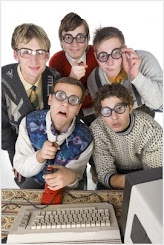0
Press-n-Peel rules!
After finally getting my native USB device working (yay, still pumped about that one) it was time to redesign the schematic and PCB layout for the proposed project: after all, there's no need for any nasty, fiddly FT232RL chips any more!
The bit of extra board space I gained from removing the FT232RL was quickly taken up by the longer PIC chip, and the additional crystal and capacitors. My board has outputs going to transistors (to amplify the current) so I can switch relays on and off.
Relays = coils = inductance, so I added some diodes to the board as well. All in all, it's getting a bit cramped on there, but with some clever re-routing (and only one "jumper" where I had to break a trace and pick it up elsewhere on the board) I managed to get everything in a 100mm x 50mm space.
I've had differing levels of success with the toner-transfer method of producing PCBs, but none of them 100% successful. Apparently it's all down to the paper type but I've tried four or five different photo papers and all of them leave broken tracks and need touching up afterwards.
Having invested in some Press-n-Peel (blue iron on paper) and reading mixed reviews (some people say it's no better than photo paper) and I pleased to report that it is the dog's doodies. There's no messing about, guessing at when your board is done. You don't need to have the iron on full heat and you certainly don't need to press and press and press for twenty minutes or more!

Simply print onto the dull side of the paper, cut to size, clean the copper board and iron on as normal. As each of the tracks is transferred onto the copper, it turns a dark black colour on the top (the surface you're ironing over). So it's really easy to tell when the entire image has transferred. It's also easy to see which tracks need a bit more heat, so you can concentrate the iron in just the right places.
When you're done, a quick quench under the cold tap until the whole board is cool, then peel the plastic-coating backing off the board.
The image was beautiful and sharp. There were no broken traces and everything was just as it should be. The backing that came away was a perfect negative image of the board design.

I'd read some reviews that said Press-n-Peel was just as hit and miss as other toner transfer methods. The one thing I know is that after tonight, there's no way I'm going back to messing about with scorched worktops and soaking paper for hours and hours: I'll happily pay £1.50 per sheet, knowing that from now on my boards will work first time, every time!

The bit of extra board space I gained from removing the FT232RL was quickly taken up by the longer PIC chip, and the additional crystal and capacitors. My board has outputs going to transistors (to amplify the current) so I can switch relays on and off.
Relays = coils = inductance, so I added some diodes to the board as well. All in all, it's getting a bit cramped on there, but with some clever re-routing (and only one "jumper" where I had to break a trace and pick it up elsewhere on the board) I managed to get everything in a 100mm x 50mm space.
I've had differing levels of success with the toner-transfer method of producing PCBs, but none of them 100% successful. Apparently it's all down to the paper type but I've tried four or five different photo papers and all of them leave broken tracks and need touching up afterwards.
Having invested in some Press-n-Peel (blue iron on paper) and reading mixed reviews (some people say it's no better than photo paper) and I pleased to report that it is the dog's doodies. There's no messing about, guessing at when your board is done. You don't need to have the iron on full heat and you certainly don't need to press and press and press for twenty minutes or more!

The image transferred perfectly, leaving a crisp, clean image on the copper board. The camera had problem focussing on the board because of the reflective surface, but the final image is much clearer than this!
Simply print onto the dull side of the paper, cut to size, clean the copper board and iron on as normal. As each of the tracks is transferred onto the copper, it turns a dark black colour on the top (the surface you're ironing over). So it's really easy to tell when the entire image has transferred. It's also easy to see which tracks need a bit more heat, so you can concentrate the iron in just the right places.
When you're done, a quick quench under the cold tap until the whole board is cool, then peel the plastic-coating backing off the board.
The image was beautiful and sharp. There were no broken traces and everything was just as it should be. The backing that came away was a perfect negative image of the board design.

The backing came away easily and was a perfect negative of the image transferred.
I'd read some reviews that said Press-n-Peel was just as hit and miss as other toner transfer methods. The one thing I know is that after tonight, there's no way I'm going back to messing about with scorched worktops and soaking paper for hours and hours: I'll happily pay £1.50 per sheet, knowing that from now on my boards will work first time, every time!

The final etched board.





Post a Comment